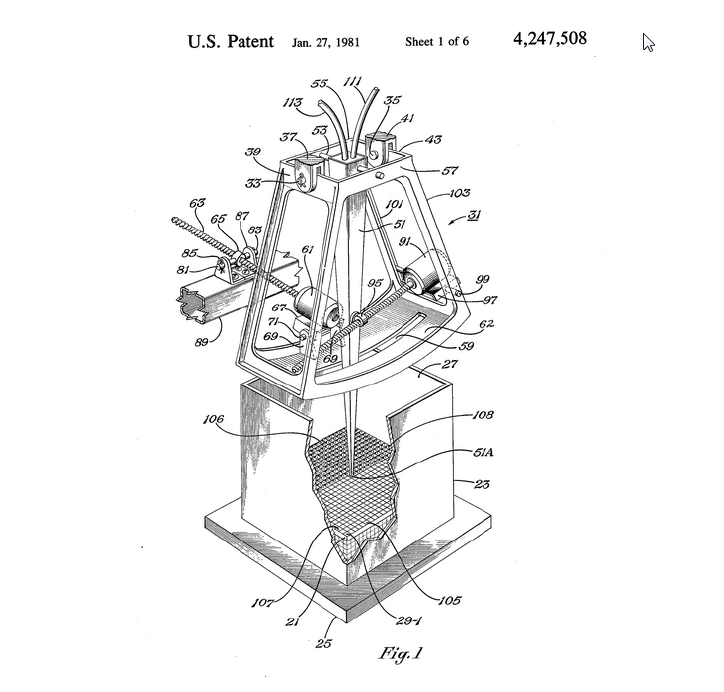Housholder, Ross F.

Ross F. Housholder patented a 3D printing technology similar to Selective Laser Sintering (SLS), but the process was never commercialized. The patent was published on 1/27/1981 and is the first official 3D printer.
How Housholder’s 3D Printing Technology Works
First, the user creates a 3D model with a 3D software program. The file is then sent to the 3D printer’s interfacing software where it will determine how the layers are printed. Then the file is sent to the 3D printer. The material for the part is a dry mixture of plaster of Paris (gypsum plaster) and sand and the support material is dry sand. Openings in the matrix are filled with casting and mold materials. The openings are then vibrated to settle the materials onto the build platform. The build platform moves downward and another layer is deposited. The dry sand acts as support material and holds the mixture in place. This process repeats until the part is complete. The build container is filled with water to wash away the sand and harden the plaster of Paris. This process takes several hours.
In another method, the user uses powder that will melt to form the part and support material powder that will not melt. The powders are deposited layer by layer and then the container is placed in an oven to melt the part material and then hardens it. The support material powder will then be blown or washed off the part.
A third method is to use an epoxy hardener mixture as the part material and epoxy as the support material. Both epoxy and hardener are deposited through tubes and injected through openings in the matrix in layers. After the part hardens, it is cleaned of epoxy material.
To learn more about the latest in 3D Printing, check out our 3D printing.